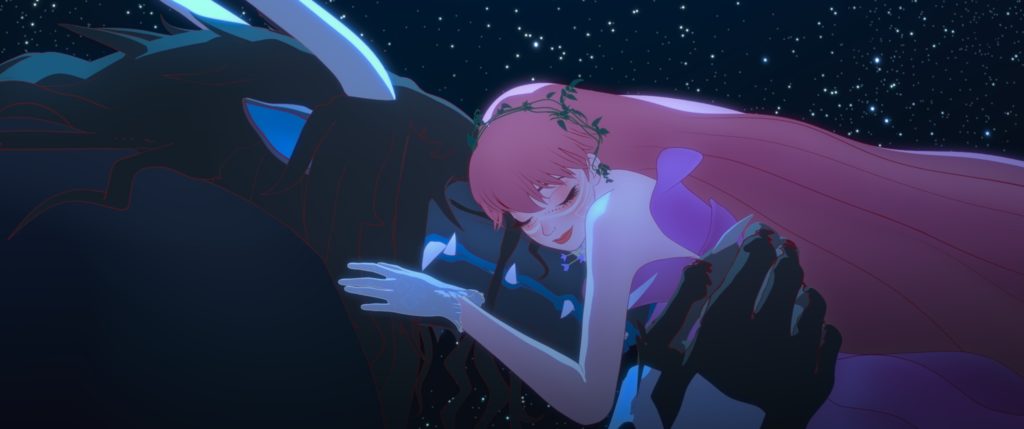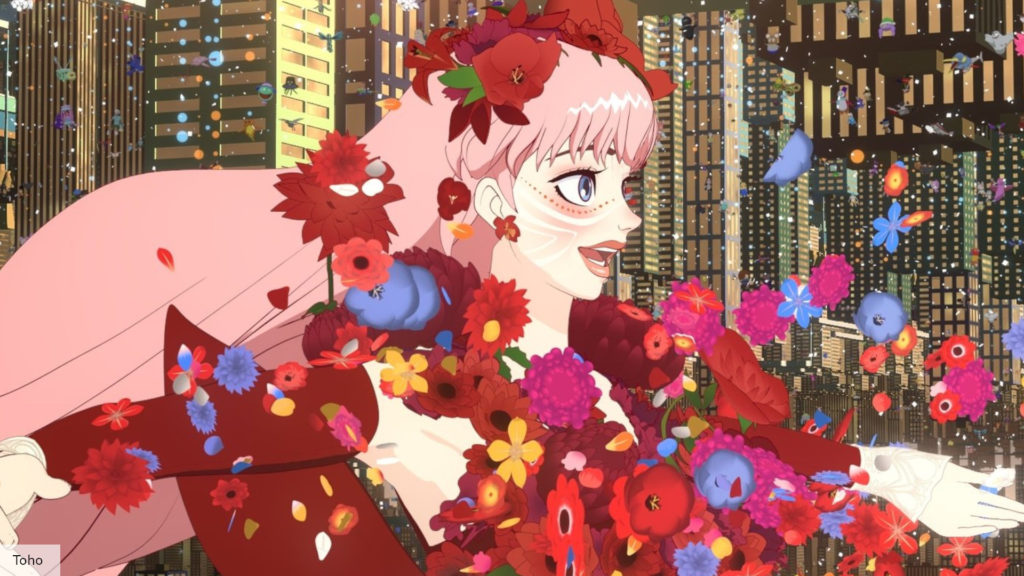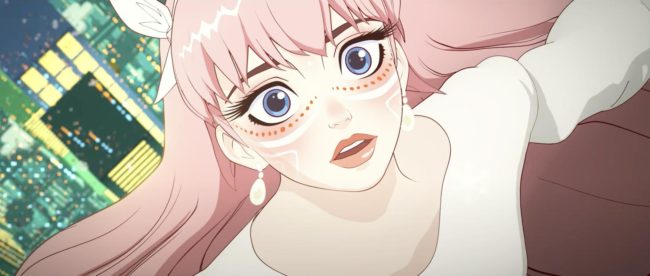Belle of The Ball: Mamoru Hosada’s Comeback Masterpiece
By Niko Adams
Minor spoilers ahead!
I went into Belle expecting only the best. The 2021 film is a product of award-winning director Mamoru Hosada, famous for The Wolf Children, The Girl Who Leapt Through Time, and Mirai (all of which have made me tear up on rewatches), and in my heart I thought Belle should truly deserve an encore simply for existing.
And despite my high expectations of the film, its soundtrack, and visuals, I was still blown away by the sum of its parts.
Belle is the story of young Suzu Naito, a vocally gifted highschooler who must face growing complications in her daily life after becoming an international pop-star as “Belle” in the virtual world of “U”. It is there that she bonds with another player, and learns to appreciate family, friendship, selflessness, and the strength of a helping hand.
The film takes place in two locations: the static, hand-drawn confines of Suzu’s hometown, where her mother’s death and resulting trauma suffocate her and viewers alike and the bright, never-ending sunset city of U, where skyscrapers and flying whales are the backdrop to live performances, and the deafening cry of millions of fans blends with Kaho Nakamura’s singing. This distinction between the stillness of Suzu’s world and the colorful, fluid, vibrancy of ‘Belle’s’ is the first look at Mamoru Hosoda’s brilliance at show, don’t tell. We feel the freedom, and wonder of U as if we ourselves are there. The film’s harsh jumps between the real world and the virtual only serve to remind us as viewers of the harsh fact that one day, Suzu will have to choose between the fame of being Belle and her desire to repair the relationships she lost as an ordinary highschooler. The animation of Belle is a technical feat, but it wins as a storytelling device. The stark contrast between the beauty of U and the dullness of the real world is even more apparent to viewers as we watch our protagonist sing for the first time. We watch as the beauty of U leaks into the hand-drawn frames of her hometown, and the wonder of being shown this metamorphosis of Suzu’s character feels far more satisfying than being told.

Belle’s original soundtrack is equally as brilliant as its visuals. Kaho Nakamura and Kylie McNeill are stunning as Belle, and perfectly capture the pain, confidence, and heartwarming love of Suzu’s singing voice as it matures and blossoms throughout the course of the film. The film’s songs (U, A Million Miles Away, and Swarms of Song, to name a few) are worthy of an add to your casual listening playlist, and have stuck with me weeks after watching the film. Their role as a plot device rather than an interlude pushes the story forward in a satisfying and visually appealing manner. Belle is a shameless retelling of the classic Beauty and the Beast, and it does not shy away from having its characters ballroom dance to the sound of the film’s most tear-jerking song, a choice that was somehow refreshing and comforting to the romantic in us all. The film’s songs, meshed with the beauty of U’s worldbuilding, the fluid movements of its characters, and the incredibly detailed scenery, is satisfying to the max.

Belle is not a romance.
It is a story about trauma, escapism, discovery, and self sacrifice. And it is for that reason that it has stayed with me more than any movie I’ve seen in the last few years. Belle advertised itself as a story about high school naivety, and an unlikely love story between the internet’s angel and a beast. But what I watched took my breath away, and subverted my expectations in a manner that I should have expected from Hosoda and the film that received a fourteen minute long standing ovation at Cannes.
What I received was a poignant story of forgiveness, courage, and the brutal fight to regain identity and comfort after trauma. And the effort to show viewers the extent of Suzu’s adversity towards singing as herself resulted in an engaging and high-stakes journey towards acceptance and wonderful, platonic, love. I was invested, and the film made it effortless to step into Suzu’s shoes and cheer her on from the bottom of my heart. The film’s visually captivating animation— with castles nestled in clouds, floating skyscrapers, and glass that shatters into diamonds— stunned me like nothing I’ve ever seen before.
Belle’s relevant message regarding familial trauma, friendship, and embracing one’s identity is exactly what we need. Hosoda’s criticism and careful consideration of internet anonymity, kindness when kindness is not necessary, and the moral complications of the free-rein the internet provides us with a lesson that is desperately needed in our world today. Just as Suzu finds comfort and opportunities in U, we see the internet as a place to be ourselves but often not at the right expense. Hosoda’s success in crafting a world both wonderful and drowning in sorrow has made Belle, what I feel to be the most innovative and emotional success in recent animation history.

